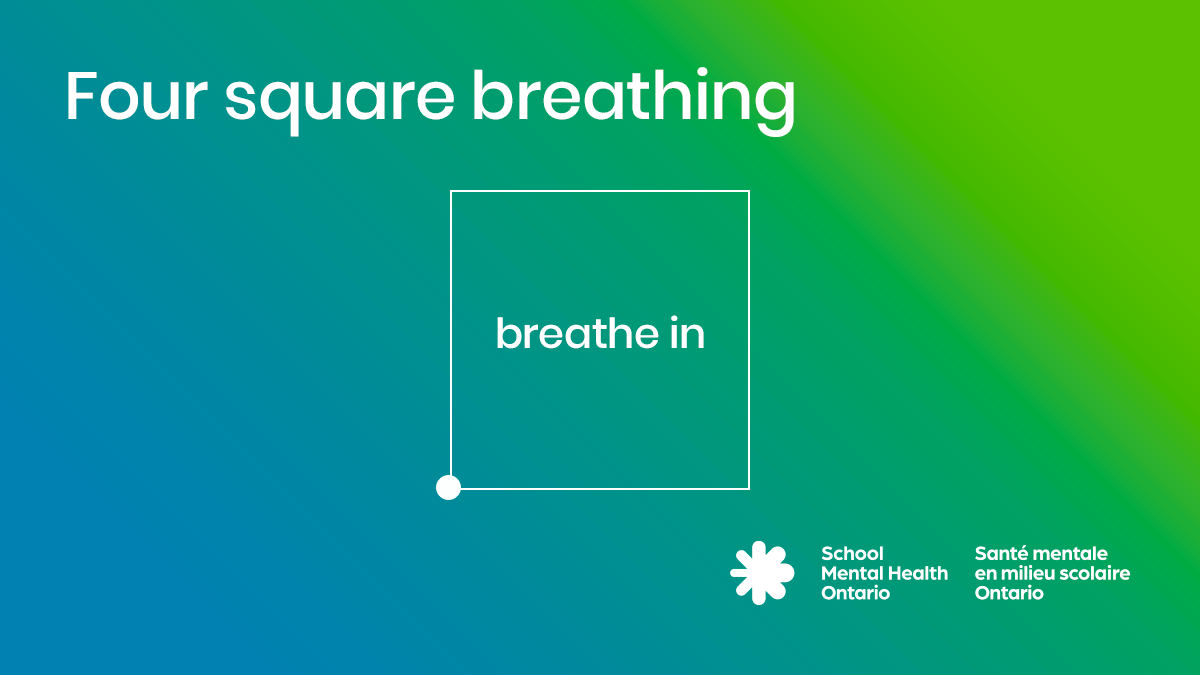


Time
2 minutes
Frequency
Multiple times daily
Material
N/A
Purpose
To help students change their state when they experience stress or anxiety
- Provide context for the practice (see “Evidence” section).
- Breathe in through the nose for approximately four seconds.
- Hold the breath for four seconds.
- Exhale for four seconds.
- Wait four seconds before inhaling again.
- Repeat.

Four square breathing:
- breathe in
- hold
- breathe out
- hold
Mental Health Literacy and Anxiety Management Social Media Bundles: Breathing exercises
The breathing cycle can be shortened or elongated depending upon the student.
Studies have shown that the inclusion of deep breathing activities are of benefit. Specifically, there are implications for decreased symptoms of stress, anxiety and depression, positive effects for cardiac health and increased emotional regulation (Jerath, Crawford, Barnes & Harden, 2015; Paul, Elam & Verhulst, 2007; Varvogli & Darviri, 2011). Breathing techniques are easy to implement, can be done independently or alongside a class wide activity, and may be used throughout life to support good health.
Jerath, R., Crawford, M. W., Barnes, V. A., & Harden, K. (2015). Self-regulation of breathing as a primary treatment for anxiety. Applied psychophysiology and biofeedback, 40(2), 107-115.
Paul, G., Elam, B., & Verhulst, S. J. (2007). A longitudinal study of students’ perceptions of using deep breathing meditation to reduce testing stresses. Teaching and learning in medicine, 19(3), 287-292.
Varvogli, L., & Darviri, C. (2011). Stress management techniques: evidence-based procedures that reduce stress and promote health. Health science journal, 5(2), 74.
‘Then the LORD God formed man of dust from the ground, and breathed into his nostrils the breath of life; and man became a living being.’ Genesis 2:7 On the day that God created us, He took a deep breath in and inhaled all His love, joy, happiness, peace, kindness, forgiveness, gratitude and then He exhaled and breathed into us all His love, peace, kindness, forgiveness, and gratitude for ourselves and to be shared with others. Taking time to focus on breath can help students prepare their body and mind for reflection and prayer.
(4h) A self-directed, responsible, lifelong learner who participates in leisure and fitness activities for a balanced and healthy lifestyle.
(3a) A reflective, creative and holistic thinker who recognizes there is more grace in our world than sin and that hope is essential in facing all challenges.
Or, view all practices and use filters to find what you need
